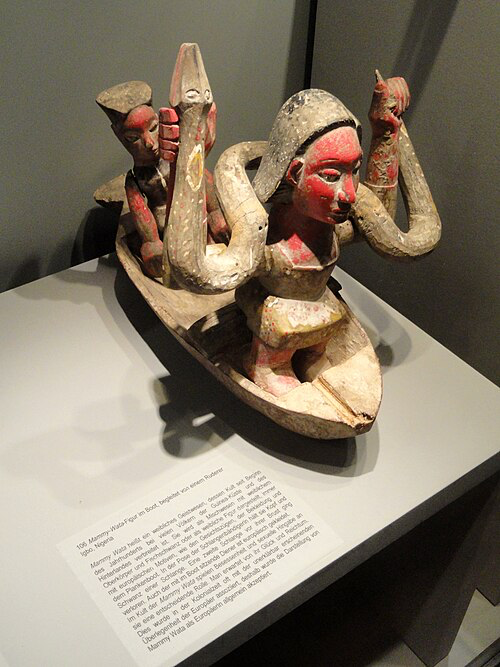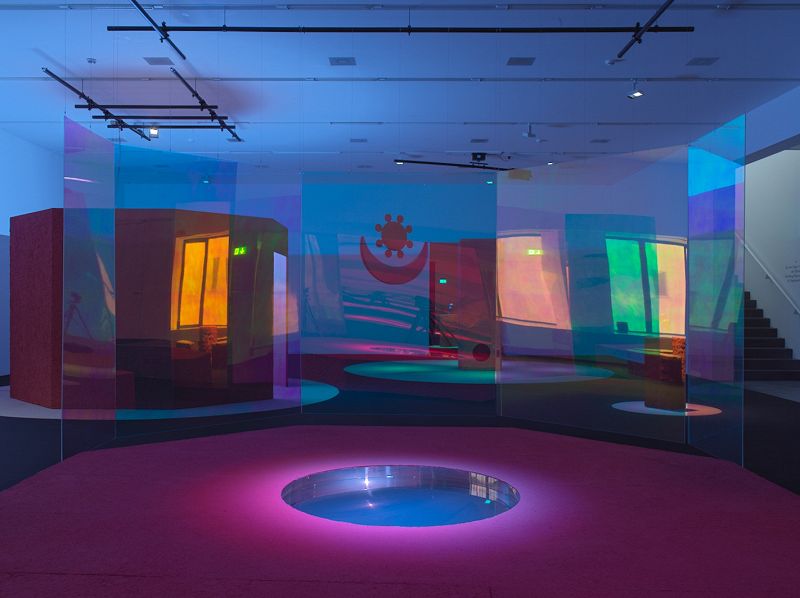


“Water is a substance that slips away from all analysis. It invites us to dream; it encourages subconscious participation. It is the most poetic of all substances.”
— Gaston Bachelard, Water and Dreams: An Essay on the Imagination of Matter (1942)
%20copy.jpg)
Water: humanity’s oldest ally — and your smartphone’s worst enemy. While we’ve spent millennia mastering it — from Khoi San ostrich eggshell canteens to South Africa’s world-first reverse osmosis tech — water remains a double-edged element. Introduce it to your phone, and suddenly it’s less “source of life” and more “agent of chaos.” Online sages and professional electricians agree, even one splash can short circuits, corrode microchips, fry batteries, or start fires. And no, a bag of rice isn’t divine intervention — it’s damage control at best.
But water and tech actually go hand in hand. For thousands of years, water has fueled human ingenuity, not just for survival, but as a force of technology. A HeroX article traces four key ancient breakthroughs: the Egyptians purified water with alum, the Greeks built water mills to power industry, the Romans mined gold using pressurised water, and the Maya engineered advanced rainwater harvesting in Tikal. Today, the challenge is passed on to modern innovators to design sustainable, future-ready water technologies.
On a national scale, South Africa knows this all too well. With erratic rainfall and thirsty cities far from natural water sources, the country has had to innovate under pressure. Initiatives like the Water Research Commission (WRC) and Water Research, Development and Innovation (RDI) are working on a future where water tech is both high-end (AI-based management systems) and deeply grassroots (safe access in rural villages). But what I find lacking, especially in a place like SA, is innovative anti-capitalist approaches to this link between water and tech.
There’s no doubt that water will power next-gen tech — but like the invisible web of undersea fibre-optic cables — its control still echoes colonial grab-and-grab politics. These cables’ routes aren’t mapped by fairness or ecology but by old empires and new capital, turning water and infrastructure into pricey, contested commodities. Yet the sea resists total lockdown. Movements like Afrofeminist Data Futures are forerunners in the discourse around decolonising water tech, helping us imagine how water can be rerouted as a space of care and connection.
I propose hydro-techno epistemes as a framework that sees water not just as H₂O. In a world obsessed with speed and control, this essay dissolves Cartesian fixity, embracing liquidity where relation and recursion replace extraction. From river economies and ancestral cosmologies to undersea cables pulsing digital life, water acts as both metaphor and material for a rhizomatic, insurgent knowledge flowing beyond Western ownership.

Let’s be clear — hydro-techno epistemes are no new school of thought but arise from diverse water cultures across time and space, where water is a living, knowing force entwined with spirit, technology, and social order. From the Yoruba’s Oshun in West Africa — embodying fertility, communication, and transformation — to the Dogon’s Nommo in Mali, ancestral waters symbolise cosmic knowledge and regeneration. In Central Africa, Kongo cosmology’s Kalunga Line connects water with life and death, making water a bridge between worlds.
Southern African indigenous cultures engage water as a source of ancestral wisdom and communal governance, embodied in rainmaking ceremonies and wetland stewardship. Central to this is the Zulu goddess Nokhubulwane — rainmaker, shapeshifter, and guardian of fertility — who governs agricultural cycles, spirit, land, and time. Nokhubulwane dissolves the divides between technology, theology, and ecology, appearing as mist and code, an interface where ancestral intelligence flows through weather, rivers, and wetlands as spiritual protocol.
Don’t be fooled into thinking that these are outdated ideas. To this day, and for many centuries, in Southern African traditions, thousands of sangomas (traditional healers) have been trained to work with Umndawu wamanzi — the living spirit of water — using its flow and wisdom as a vital part of their ancestral healing and divination practices. These are not mere metaphors but fundamental ways communities experience water — as sacred rivers, communicative dreams, and ceremonies that sustain the balance between human and spiritual worlds.
Like the waters they emerge from, many African water spirits infiltrate the rest of the globe with transparent ease. Mami Wata, whose image blends European mermaid myths, 19th-century snake charmer prints, and Hindu influences, is associated with wealth, healing, and transformation. Her worship, widespread across Africa and the diaspora, demands deep devotion and sometimes vows like celibacy, with broken promises bringing misfortune. Mami Wata’s complex identity reflects water’s fluidity and the blending of diverse cultural traditions.
Inspired by such liturgies, hydro-techno epistemes plug us into water’s wild code — rivers streaming data, fog carrying memory, drought dropping elegies. No dusty myth here, but an ancestral OS swapping cold, soulless tech for ritual hacks, seasonal syncs, and recursive wisdom. Tech goes from stiff and binary to juicy, sentient, and savvy — rain as Morse, wetlands as Earth’s OG hard drives. Meanwhile, the real world’s a mess — some thirst while others flood, proving water’s both lifeblood and the ultimate power play.
At this point, the concept of wetness emerges organically — not simply as the physical state of being soaked, but as a dynamic condition of flow and clarity. This leap from water to wetness seems obvious but requires a deepening: wetness captures the sensuous, generative, and relational dimensions of water that most traditions already hold sacred. But it is also a radical departure from the patriarchal expectancy of dryness in tech narratives. Wetness disrupts the dominant narrative of cold, hard, and binary machines.
In feminist and queer theory, wetness has emerged as a potent conceptual tool that disrupts rigid binaries and affirms fluid, relational ways of being and knowing. In Hydrofeminism: Or, On Becoming a Body of Water (2012), Astrida Neimanis famously writes, “We are all bodies of water,” proposing that our subjectivities are not contained, but leaky, porous, and enmeshed in planetary hydrologies. Here, wetness becomes epistemological: a means of knowing through interdependence and permeability.
Wetness, in this frame, can be approached as an Afro-feminist and queer counter-logic: an epistemology and ontology that privileges softness, eroticism, and fluidity as modes of resistance to patriarchal, colonial, and computational dryness. It is not disorder, but a different kind of order — slippery, recursive, and relational. As a queer metaphysics, wetness disrupts rigid binaries, and refuses the fantasy of separation. It becomes a critical bridge between ancestral water wisdom and contemporary feminist thought, reimagining technology not as cold artefact but as a living, leaking, interconnected process.
In the final refrain of Minna Salami's essay, The Liquid Space Where African Feminism and African Futurism Meet, published in Feminist Africa, Volume 2, in 2021, the author declares: “At the moment, the future of the African continent looks like a fire. It will take a wet and fluid place where thought leads to discussion, and where discussion leads to awareness, to quench the flames. This place is the liquid space where African feminism and African futurism meet.” Salami’s liquid space reimagines knowledge as a flowing, multidimensional medium where African feminist and cosmological insights merge.
Artmaking powerfully answers Salami’s call, with water long inspiring African creativity, as showcased in the Smithsonian’s Currents: Water in African Art. Yet in African tech innovation, these rich, fluid understandings often vanish, replaced by the dry rigidity of Euro-patriarchal logic. Still, many African-descended artists bridge this divide, revealing water as a living technology — a vibrant force weaving myths, rituals, social bonds, history, identity, and future possibilities. As Salami reminds us, the future is now — and there are certainly artists already pioneering ideas I am trying to get at with hydro-techno epistemes.
In Deep Down Tidal (2017), Tabita Rezaire overlays celestial cartographies, fibre-optic maps, and aquatic imagery to reveal how the internet’s undersea cables mirror the transatlantic slave trade’s maritime routes. Water becomes an ancestral interface — simultaneously archive, wound, and channel — through which data and memory circulate. Rezaire’s own floating body, coded with text and spiritual glyphs, drifts in this liquid network as both modem and medium. In Premium Connect (2017), her body morphs into a fibre-optic shrine via 3D animation and Afro-digital iconography, merging sacred geometry with speculative tech. Across both works, water is not backdrop but interface — an epistemic liquid through which Rezaire stages a decolonial, cyber-spiritual reclamation.
In Ophelia Does Backstroke (2022), Natalie Paneng reimagines the archetype of Millais’s drowned Ophelia through a digital installation that merges theatricality, myth, and immersive technology. Presented during the FNB Art Joburg Open City, the work envelops viewers in LED pools of shifting blue and violet light, casting a synthetic aquatic ambience across the floor. Suspended plexiglass panels display silkscreened images of Paneng submerged, arms open, in poses that oscillate between surrender and sovereignty. These layered, semi-translucent images flicker like spectral reflections, suggesting both digital screen and sacred mirror. Rather than signify death, water here becomes a medium of speculative renewal—a liquid archive where identity is layered, refracted, and alive.
In Resonant Frequencies (2022), Evan Ifekoya transforms the exhibition space into a multisensory bath of vibration, ritual, and fluidity. In The Welcome, a circular water tank responds to sonic frequencies, sending rhythmic ripples across its surface while casting shimmering light onto the ceiling — an aqueous cosmos suspended between reflection and resonance. This choreography of wave and echo blurs boundaries between body, sound, and spirit. In The Silent Echo, a chamber saturated in ultramarine light and softened by anechoic foam evokes the density and hush of submersion. Water here is not illustrative but operative: a techno-spiritual conduit shaped by Yoruba cosmology and queer diasporic ritual, where sound waves become healing waves, and immersion becomes ancestral work.
Hydro-techno epistemes compel us to see technology as soft and wet, rather than as hard, dry tools of extraction. They can scatter the line between nature and machine, spirit and system, indigenous and modern — E be like wahala inside oppressive system — make tech no be weapon again. A decolonial hydro-techno future flows like a river: always connected to its source, that first primordial soup from which all things emerged. So next time you drop your phone in water, please let it linger a moment — imagine what might ripple beyond that horizon. Conceive of technologies that don’t just survive wetness but embrace their dependence on it. Then, by all means, once you’re over that exercise — try putting it in a bag of rice.

